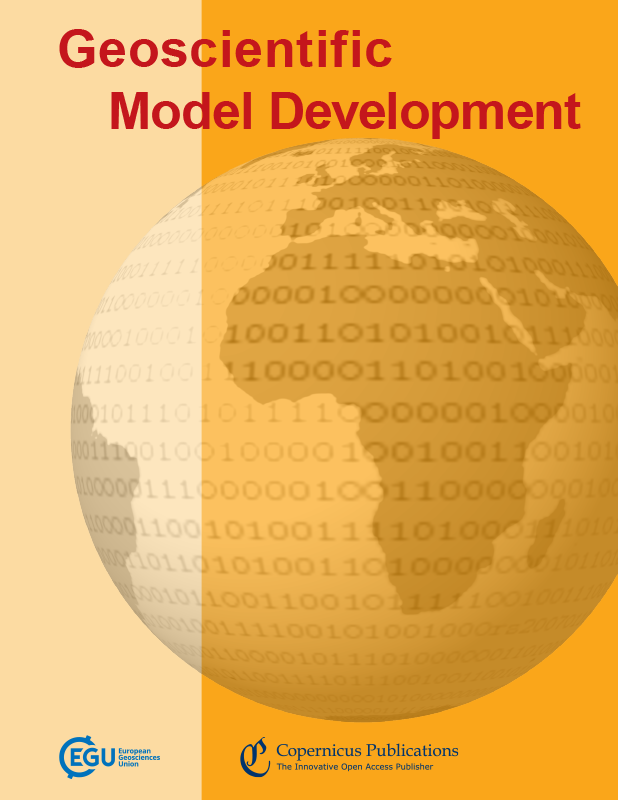利用慕尼黑街道网络模型模拟街道浓度异质性
IF 4.9
3区 地球科学
Q1 GEOSCIENCES, MULTIDISCIPLINARY
引用次数: 0
摘要
摘要由于不利的扩散条件和靠近交通,城市地区的人口暴露于当地高浓度的污染物,如二氧化氮和微粒物质。为了模拟城市上空的这些浓度,像慕尼黑街道网络模型(峡谷和公路相交的城市网络模型)这样的模型依赖于参数化来表示街道上的空气流动和污染物浓度。在当前版本MUNICH v2.0中,假设每个街道段的浓度是均匀的。一个新的版本的慕尼黑,其中的街道体量是离散的,以表示街道梯度,并更好地估计人们的暴露。每个街道段有三个垂直层次。在特定的条件下,通过考虑两个区域,并采用操作性街道污染模型(OSPM)的参数化,还引入了水平离散化。模拟在丹麦哥本哈根的两个地区和法国大巴黎的一个地区进行。与观测结果相比,结果有所改善,街道底部、靠近交通的地方,交通排放的污染物(氮氧化物、黑碳、有机物)浓度更高。与MUNICH v2.0相比,NO2和PM10分别增加了60%和30%。长宽比(建筑高度与街道宽度之比)影响与街道平均水平相比一级浓度增加的程度。宽街道(宽高比低,通常交通流量大)的氮氧化物排放量增加了53%,PM10排放量增加了18%。最后,对街道网络影响的敏感性分析强调了将慕尼黑模型用于一个网络而不是单个街道的重要性。本文章由计算机程序翻译,如有差异,请以英文原文为准。
Modelling concentration heterogeneities in streets using the street-network model MUNICH
Abstract. Populations in urban areas are exposed to high local concentrations of pollutants, such as nitrogen dioxide and particulate matter, because of unfavourable dispersion conditions and the proximity to traffic. To simulate these concentrations over cities, models like the street-network model MUNICH (Model of Urban Network of Intersecting Canyons and Highways) rely on parameterizations to represent the air flow and the concentrations of pollutants in streets. In the current version, MUNICH v2.0, concentrations are assumed to be homogeneous in each street segment. A new version of MUNICH, where the street volume is discretized, is developed to represent the street gradients and to better estimate peoples' exposure. Three vertical levels are defined in each street segment. A horizontal discretization is also introduced under specific conditions by considering two zones with a parameterization taken from the Operational Street Pollution Model (OSPM). Simulations are performed over two districts of Copenhagen, Denmark, and one district of greater Paris, France. Results show an improvement in the comparison to observations, with higher concentrations at the bottom of the street, closer to traffic, of pollutants emitted by traffic (NOx, black carbon, organic matter). These increases reach up to 60 % for NO2 and 30 % for PM10 in comparison to MUNICH v2.0. The aspect ratio (ratio between building height and street width) influences the extent of the increase of the first-level concentrations compared to the average of the street. The increase is higher for wide streets (low aspect ratio and often higher traffic) by up to 53 % for NOx and 18 % for PM10. Finally, a sensitivity analysis with regard to the influence of the street network highlights the importance of using the model MUNICH with a network rather than with a single street.
求助全文
通过发布文献求助,成功后即可免费获取论文全文。
去求助
来源期刊

Geoscientific Model Development
GEOSCIENCES, MULTIDISCIPLINARY-
CiteScore
8.60
自引率
9.80%
发文量
352
审稿时长
6-12 weeks
期刊介绍:
Geoscientific Model Development (GMD) is an international scientific journal dedicated to the publication and public discussion of the description, development, and evaluation of numerical models of the Earth system and its components. The following manuscript types can be considered for peer-reviewed publication:
* geoscientific model descriptions, from statistical models to box models to GCMs;
* development and technical papers, describing developments such as new parameterizations or technical aspects of running models such as the reproducibility of results;
* new methods for assessment of models, including work on developing new metrics for assessing model performance and novel ways of comparing model results with observational data;
* papers describing new standard experiments for assessing model performance or novel ways of comparing model results with observational data;
* model experiment descriptions, including experimental details and project protocols;
* full evaluations of previously published models.
 求助内容:
求助内容: 应助结果提醒方式:
应助结果提醒方式:


